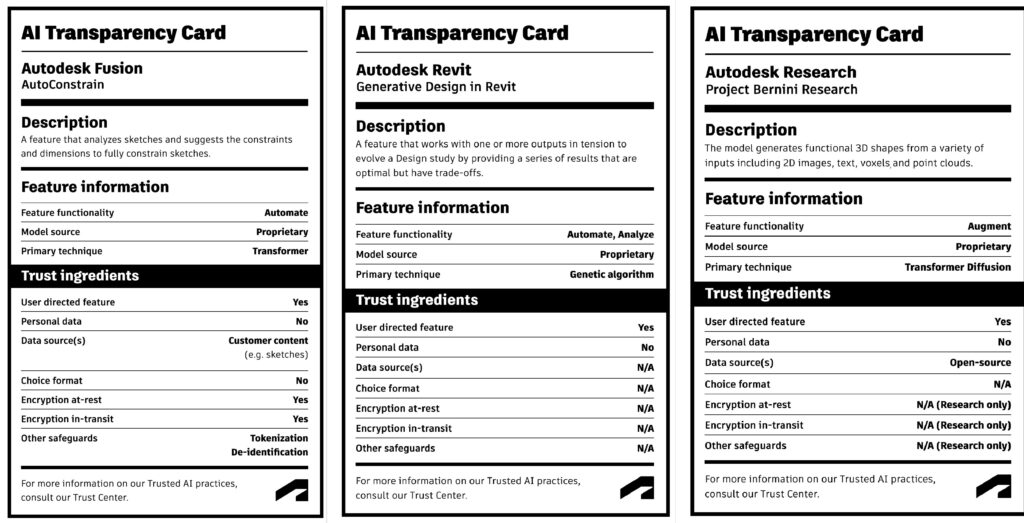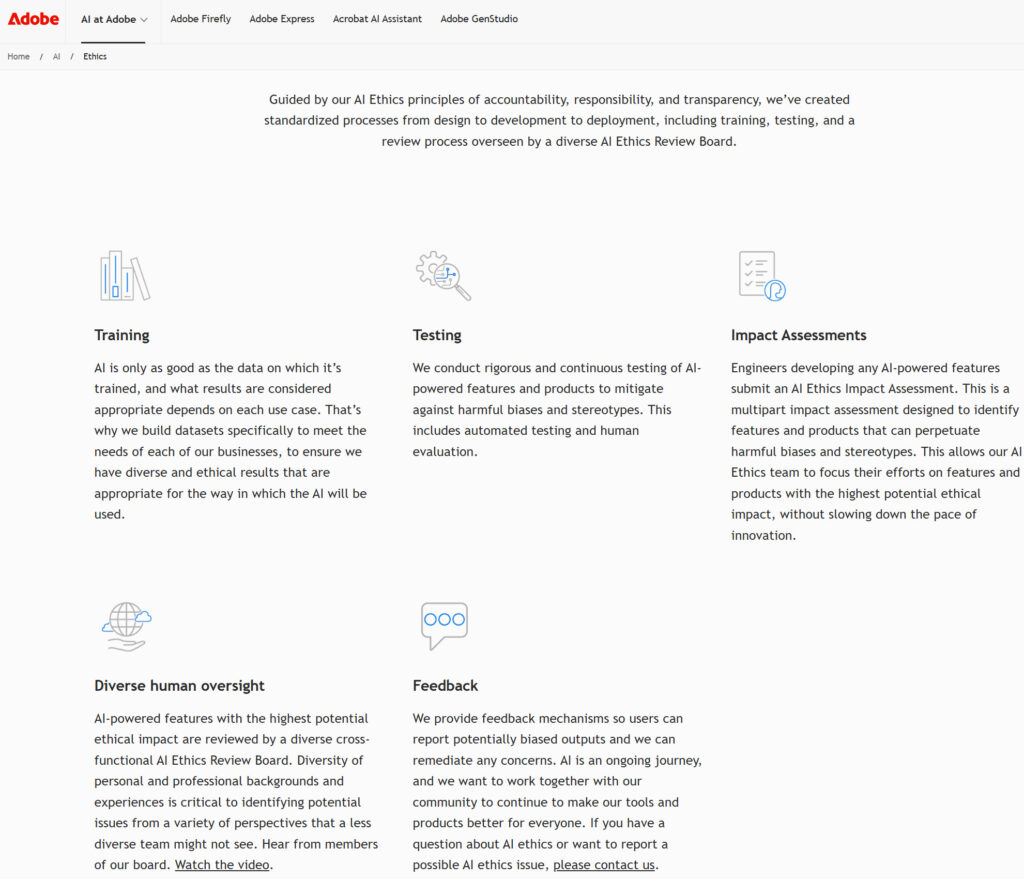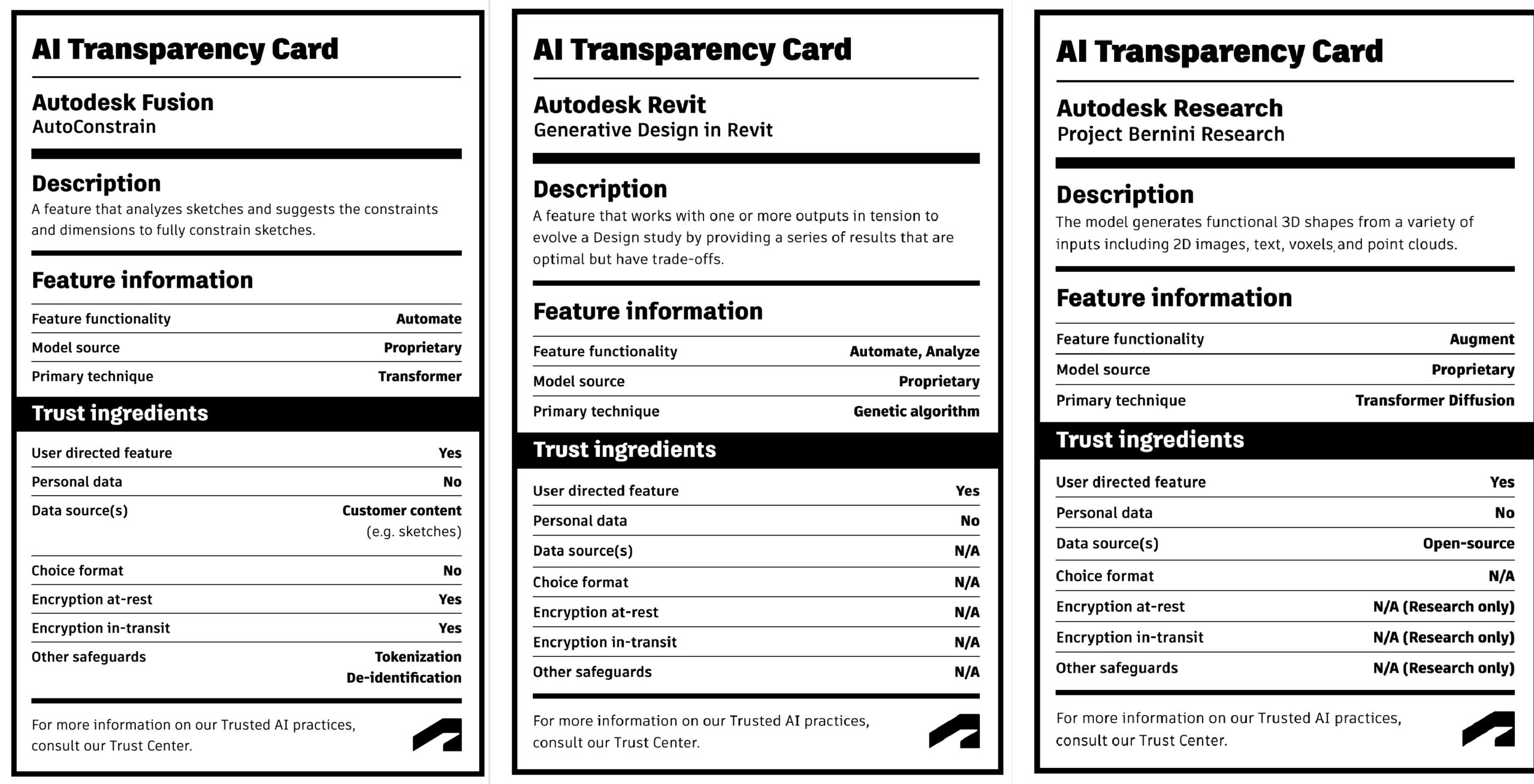AI is rapidly changing industries around the globe, offering innovative solutions that enhance efficiency, creativity, and productivity. However, as AI technologies become more integrated into our daily lives, concerns about privacy, ethics, and the misuse of intellectual property (IP) have grown. Transparency and clear communication are essential in addressing these issues and building trust between AI providers and users.
Tech companies like Autodesk and Adobe are taking steps toward fostering this trust by implementing transparent and responsible AI policies. While each company’s approach varies, their efforts highlight a positive trend in the industry toward ethical AI development and deployment.
Why Clear and Accessible Transparency Matters
Transparency in AI is not just about disclosing information—it’s about making that information accessible and understandable to users. Clear communication empowers users to make informed decisions about how they engage with AI technologies. It helps build trust by demonstrating that companies are open about their practices and respectful of user rights, including the protection of personal data and intellectual property.
Key Reasons for Transparency:
- User Empowerment: Simplified policies enable users to understand AI functionalities and data usage.
- Building Trust: Open communication fosters confidence in how companies handle user data and IP.
- Ethical Assurance: Transparency helps prevent misuse of data and supports ethical AI development.
- Industry Standards: Clear policies encourage the establishment of best practices across the industry.
Autodesk’s Approach: AI Transparency Cards
Autodesk has set a commendable example by providing AI transparency cards—concise documents that explain their AI features, data usage, and the safeguards in place to protect users. These cards are designed to be user-friendly, avoiding technical jargon and lengthy legal language.
Features of Autodesk’s Transparency Cards:
- Concise Information: Present key details about AI functionalities and data practices clearly.
- Accessibility: Use plain language to make information easily understandable.
- Focus on User Concerns: Address specific issues related to data use, privacy, and IP protection.

Examples of Autodesk’s AI Transparency Cards:
- Project Bernini Research
- Functionality: Generates 3D shapes from inputs like images and point clouds.
- Trust Safeguards: Uses proprietary models trained on open-source data without involving personal or proprietary user data.
- Generative Design in Revit
- Functionality: Analyzes design trade-offs to provide optimal results.
- Trust Safeguards: Adheres to privacy principles, keeping user data on the user’s device unless they choose to share it.
- AutoConstrain in Fusion 360
- Functionality: Automates sketch constraints to improve design efficiency.
- Trust Safeguards: Encrypts data during processing without storing user data afterward.
Adobe’s Commitment to Responsible AI
Adobe is also making strides toward transparency and ethical AI practices. While their policies might be less detailed than Autodesk’s transparency cards, they are moving in the right direction by openly sharing their approach to generative AI and responsible innovation.

Highlights of Adobe’s AI Policy:
- No Training on Customer Content: Adobe states that they do not train their generative AI models, like Adobe Firefly, on customer content without permission.
- Use of Licensed Data: They train AI models only on content they have rights to use, such as Adobe Stock images, compensating creators accordingly.
- Protection of IP Rights: Adobe is committed to defending the intellectual property rights of the creative community and prohibits third parties from training on customer content hosted on their platforms.
- Ethical Development Practices: Guided by principles of accountability, responsibility, and transparency, Adobe incorporates diverse human oversight, rigorous testing, and impact assessments in their AI development process.
- Content Authenticity Initiative: Adobe is a founding member of this initiative, focusing on ensuring transparency in content ownership and creation methods.
The Need for Industry-Wide Adoption of Transparent Practices
While the efforts of Autodesk and Adobe are commendable, it’s essential for the broader industry to adopt similar transparent and ethical practices. Clear and accessible communication about AI technologies should become standard, ensuring users are fully informed about how their data is used and protected.
Recommendations for Industry Adoption:
- Simplify Communication: Provide policies and information that are easy to understand and readily accessible.
- Respect Intellectual Property: Ensure that user data and creations are not used to train AI models without explicit consent.
- Enhance Transparency: Openly share AI practices, data usage, and safeguards to build trust with users.
- Promote Ethical Standards: Adopt principles that prioritize responsibility, accountability, and user privacy across all AI developments.
Protecting User Data and Intellectual Property
Protecting user data and IP is crucial in maintaining trust and encouraging the continued use of AI technologies. Both Autodesk and Adobe emphasize that they do not use customer content to train their AI models without permission, and they have measures in place to safeguard user creations.
Key Protective Measures:
- Informed Consent: Clearly communicate how user data will be used and obtain permission when necessary.
- Data Security: Implement strong security protocols to prevent unauthorized access or misuse.
- Respect for IP Rights: Ensure that AI models do not infringe upon or misuse proprietary designs or content.
Conclusion
Transparency and ethical practices in AI are essential for building and maintaining trust between technology providers and users. Companies like Autodesk and Adobe are leading by example, offering clear, accessible information about their AI technologies and data practices. Their approaches highlight the positive direction in which the industry is moving, emphasizing the importance of user empowerment and ethical responsibility.
As AI continues to evolve, it’s crucial for more organizations to adopt similar transparent practices. By doing so, the industry can foster an environment where innovation thrives alongside respect for user rights and ethical standards.
Learn More:
- Autodesk’s AI Transparency Initiatives: Explore the AI Transparency Cards
- Adobe’s Approach to Responsible AI: Read about Adobe’s AI Ethics



